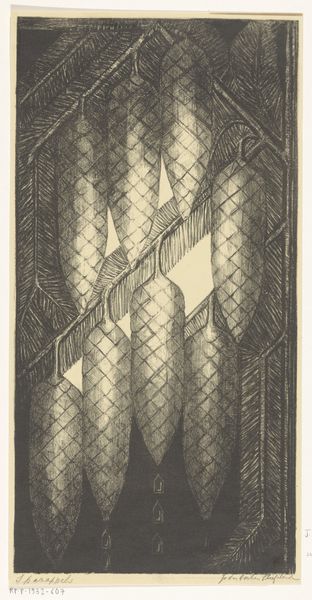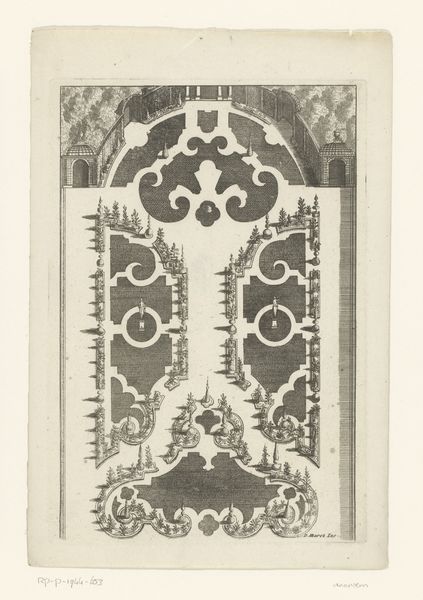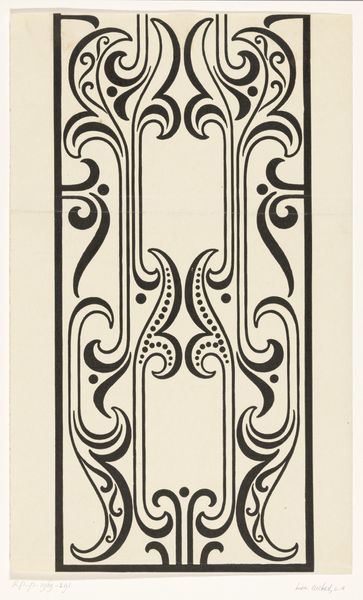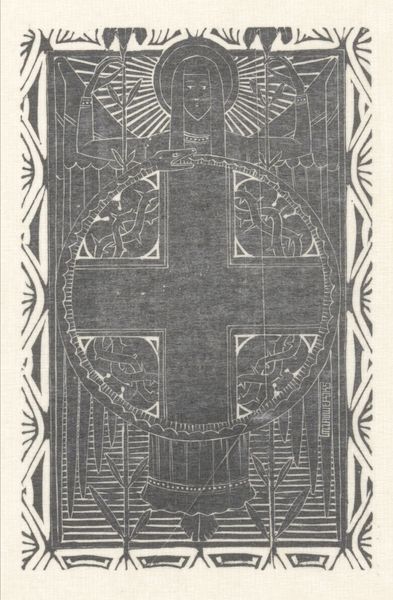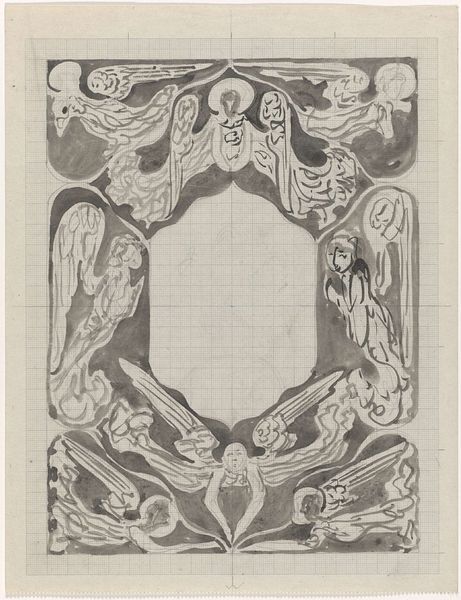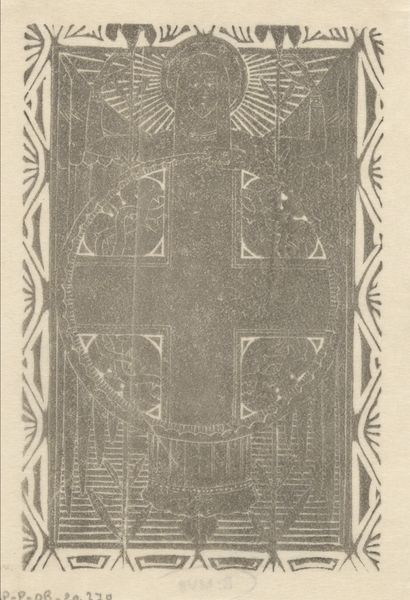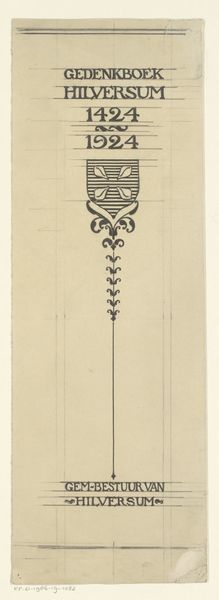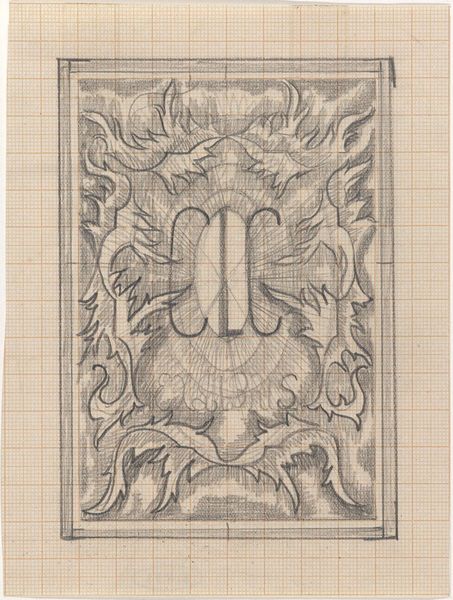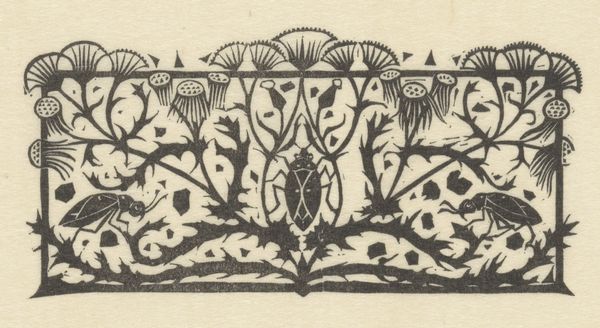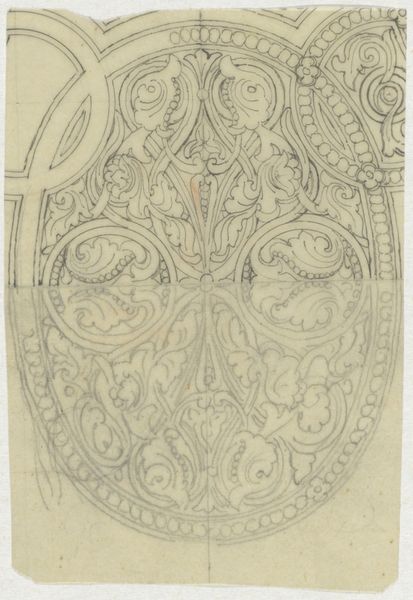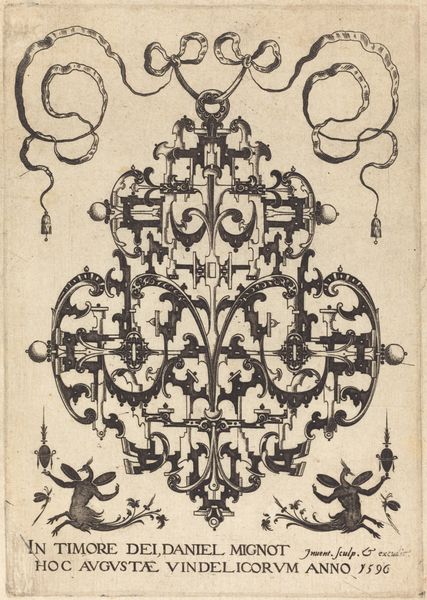
drawing, print, poster
#
drawing
# print
#
arts-&-crafts-movement
#
pattern
#
linocut print
#
organic pattern
#
geometric
#
vertical pattern
#
line
#
decorative-art
#
poster
Dimensions: sheet: 15 15/16 x 11 in. (40.5 x 27.9 cm)
Copyright: Public Domain
Editor: We're looking at "Design drawing" by Christopher Dresser, created between 1878 and 1888. It’s a print – possibly a linocut – showcasing a vertical pattern. The whole composition feels quite ordered. How would you interpret this work? Curator: Focusing purely on the visual elements, one is immediately struck by the interplay of geometric and organic forms. Observe how the artist uses sharp, angular lines to create a sense of upward movement, almost like stylized, budding plants reaching for light. Editor: I see that now! The shapes do have a natural, almost botanical feel despite their rigid structure. Curator: Precisely. Notice also how the repetition of these shapes generates a dynamic rhythm. The verticality emphasizes the artwork’s two-dimensionality while creating an almost architectural presence, doesn’t it? Editor: Yes, definitely. It's quite striking how flat it appears, yet the composition creates depth through layering. So, from a formalist perspective, the beauty lies in this tension between the flat surface and the illusion of space? Curator: Precisely. And the success of this work resides in the effectiveness of its linear design. Each element contributes to the overall harmony. How do you see the artist has applied the principles of contrast and unity? Editor: Well, the contrast is definitely in the sharp, jagged lines versus the smoother curves… and the unity comes from the repetition of shapes. Curator: Indeed, this generates a formal coherence within the work. This principle makes the overall design visually compelling and satisfying. Editor: This deep dive into the shapes, lines, and composition has really given me a new appreciation for the artwork. Thank you. Curator: Likewise, reflecting on the formal arrangement sharpens the understanding of the period’s emphasis on decorative and structural unity.
Comments
No comments
Be the first to comment and join the conversation on the ultimate creative platform.
